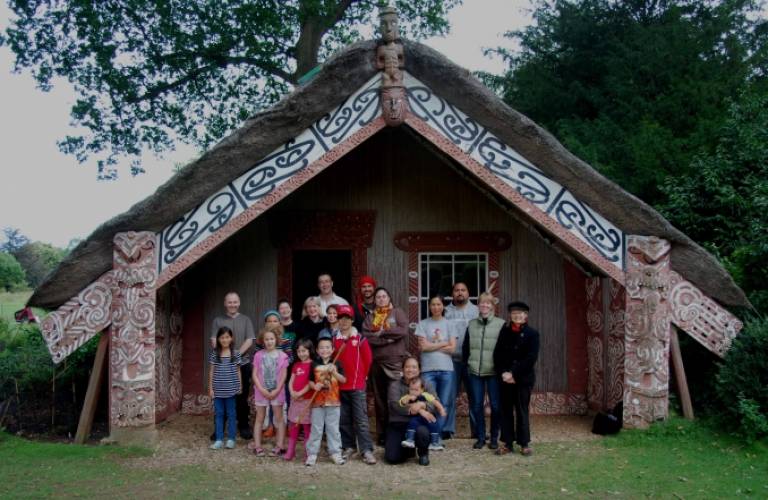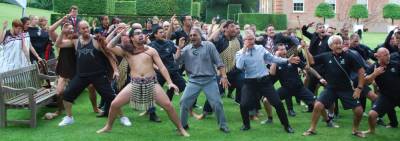Caring for Hinemihi: A Maori meeting house in the UK

12 December 2014
UCL research examined how conservation can move from preserving materials to developing connections between people and their heritage. This led to a shared responsibility between the National Trust and Maori regarding the care of Hinemihi, a Maori meeting house in the UK, as the focus of a network of relationships.
When conserving historical sites and objects, the traditional approach has been to understand them as objects whose fabric must be conserved. Dean Sully (UCL Institute of Archaeology) proposed a different approach: through the Peoples-based Conservation Project he instituted a new understanding of conservation practice in which the relationships between people and objects or sites is the essential element.
In 2002, Dean Sully initiated research with the National Trust and Maori groups to establish a new strategic approach to conservation at Hinemihi, a historic Maori meeting house (referred to as 'she') which was brought to Clandon Park, Surrey, in the 19th century.
Meeting houses are celebrated in Maori culture as living entities which embody the values, customs, social structures and practices of Maori people. Until Dean Sully's research, however, the debate around the conservation of Hinemihi had focused on physical alterations to the structure. Drawing on fieldwork in New Zealand, he devised new approaches which questioned the approach to Hinemihi as an ethnographic object and advocated for the active participation of Maori in the UK and New Zealand.
In 2012, the volunteer group Te Maru o Hinemihi was established, comprising Maori resident in the UK. This was the institutionalisation of a new approach to conservation towards the Maori view of Hinemihi as a living being in whose care her community participate actively. Between 2009 and 2013, three series of community-based events were held to develop relationships with Hinemihi for both Maori and local residents. For example, in 2010, the Staying with Hinemihi event brought 43 of her people to stay overnight, sleep in Hinemihi and participate in an artwork.

Another workshop led to the creation of traditional decorative panels, under the supervision of trained weavers, which were completed by Ngati Hinemihi in New Zealand and Hinemihi's People in the UK. As a demonstration of her cultural importance to New Zealanders, including those without Maori heritage, Hinemihi hosted a ceremonial welcome for the New Zealand Olympic team in 2012.
Hinemihi's traditional role in Maori culture is being translated to the UK. Her people are conceived to include residents local to Clandon Park, and visitors are encouraged to encounter Maori culture through her and consider the modern legacy of past colonial relationships.
Dean Sully's research and activities at Hinemihi led to new ways of understanding and practicing conservation, which have influenced the conservation profession, for example through professional development courses in the UK, and through the work of the International Centre for the Study of the Preservation and Restoration of Cultural Property.
" I will always remember sleeping in Hinemihi and what a privilege that was. I loved singing and talking with her and helping her to be fed on a wairua [spiritual] level. As a Maori, I understand this important facet of caring for such a taonga [treasured thing]. If people can stay in Hinemihi on a regular basis, she will be warm and fully fed all the time... - Participant in Staying with Hinemihi
Related links
- Te Maru O Hinemihi
- Te Kohanga Reo o Rānana
- National Trust page on Hinemihi at Clandon Park
- WHAT Architecture
Images
- Hinemihi's People at the noho marae (sleepover) at Hinemihi (Dean Sully 2010)
- Ngati Hinemihi, Ngati Ranana and the New Zealand Olympic team performing a haka to Hinemihi (Dean Sully 2012)
 Close
Close

